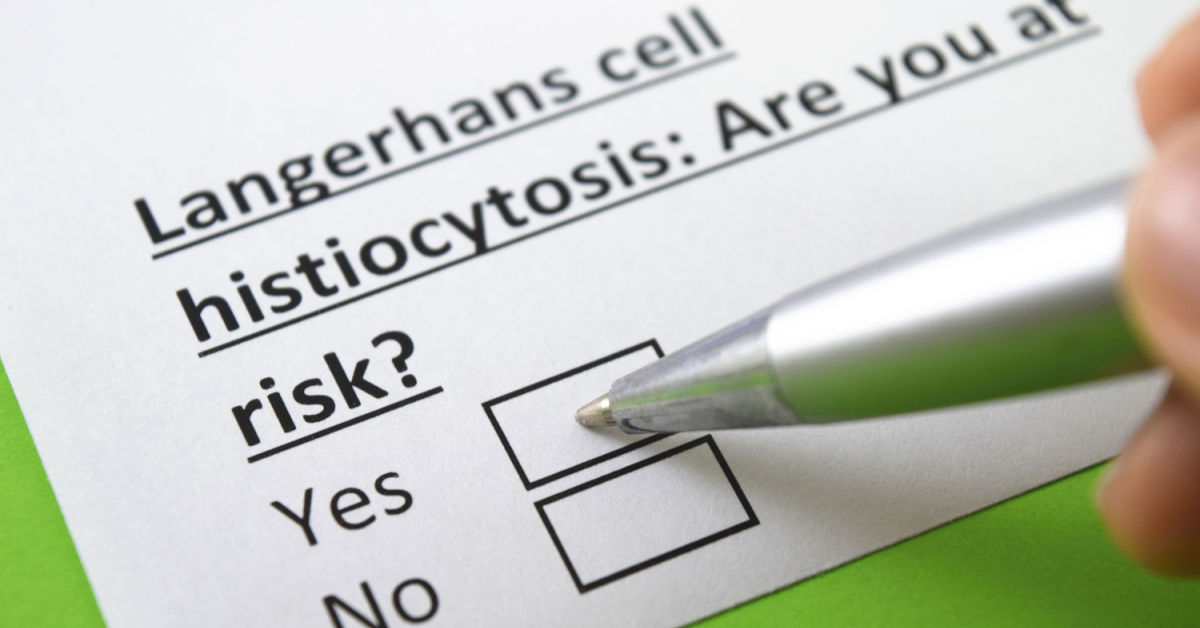Langerhans Cell Histiocytosis: Symptoms, Causes and Treatment


Overview
Langerhans cell histiocytosis, or histiocytosis X, is an uncommon condition primarily occurring in children. It stands out by an unusual proliferation of a type of immune cell called histiocytes. The condition mainly develops in toddlers and young children. In rare cases, adults can develop it too.
The blog explains Langerhans cell histiocytosis, its symptoms, causes, and various treatment options.
What is Langerhans Cell Histiocytosis?
As mentioned earlier, Langerhans cell histiocytosis is a rare disorder that predominantly affects children. Children affected by this disorder develop an abnormal increase in a particular form of white blood cells known as histiocytes. These cells are an integral part of your child’s immune system that helps fight various foreign materials and infections. The excessive production of histiocytes may lead to the formation of lesions, tumors, and other tissue damage. The disorder affects several body parts, including bones, and may spread to other areas.
Earlier, experts considered Langerhans cell histiocytosis as a cancer-like condition. But only recently, doctors have recognized it as an autoimmune disorder. However, it is not contagious and cannot spread to other body parts. Children between the ages of 1 to 15 years get affected by this disorder.
What are the Symptoms of Langerhans Cell Histiocytosis?
The signs of Langerhans cell histiocytosis are noticed in various body parts. But it is prominent in the skin and bones. It also affects multiple internal organs, including the liver, lungs, brain, spleen, and lymph nodes.
Your child may experience mild to severe symptoms. But some children develop a severe form of the disorder that affects several body parts.
The following are the signs and symptoms of Langerhans cell histiocytosis:
- Skin: Children born with the disorder develop red, scaly scalps, often confused with cradle cap – a common skin condition. You may notice red, scaly bumps in the skin folds of your child.
- Liver: Severe cases of the disorder only affect the liver. Therefore, your child may appear jaundiced, and your child’s blood clots slower.
- Lymph nodes: These glands are behind the ears, neck, and other body places. With the disorder, your child may experience inflammation of the lymph nodes. Sometimes, they may also develop breathing issues and cough.
- Bone: Your child may develop bone lesions, extreme pain, and a limp in the legs.
- Teeth and gums: Swelling in the gums. Your child may also lose teeth too.
- Eyes: It affects vision or may cause your child’s eyes to bulge
- Central nervous system: You may notice that your child complains of constant and chronic headaches, dizziness, vomiting, excessive thirst, and frequent urination
- Ear: Frequent and regular infection and discharge from your child’s ear
- Pituitary gland: It is present at the base of the brain that produces hormones. Hormones are responsible for several bodily functions. When the pituitary gland gets affected, the child may experience delayed puberty, infertility, excessive urination, and thyroid issues.
Other general signs include the following:
Other underlying health conditions may also cause the symptoms mentioned above. Therefore, seeking proper medical attention and receiving the appropriate diagnosis is crucial.
Request an appointment at Apollo Hospitals
What are the causes of Langerhans Cell Histiocytosis?
Experts are continuing to research to find the cause of the disorder. However, nearly half of the patients with Langerhans cell histiocytosis have mutated genes that multiply rapidly. The genetic mutation occurs after birth, meaning it is not inherited from your parents.
Experts believe that other factors play a vital role in developing the disorder, such as:
- Smoking
- Parents exposed to environmental toxins, such as benzene or wood dust
- Contracting infection as a newborn
- History of thyroid disease.
How Do Doctors Diagnose Langerhans Cell Histiocytosis?
Apart from a physical examination and understanding of symptoms, your doctor may also prescribe specific tests:
- Imaging tests: Your pediatrician may order special imaging tests, such as X-rays and CT scans, to check for tumors in several body parts. These tumors have a punched-out appearance.
- Bone marrow biopsy: Your doctor may surgically remove a small sample of your child’s bone marrow to check for a specific protein and other markers of Langerhans cell histiocytosis.
- Blood test: It helps determine the health condition of your internal organs, such as the kidneys, liver, and thyroid. It also helps determine if the cells in the body are rapidly growing.
- Urine analysis: The pathologist looks for abnormal levels of red and white blood cells, protein, and sugar in your urine.
Are There Any Treatment Options for Langerhans Cell Histiocytosis?
The prognosis is based on the disorder’s stage and the treatment provided . The prognosis also depends on your child’s general health and age. Your doctor may prescribe the following treatment options:
- Steroids: Your child may be treated with steroids to suppress their immune system. However, sometimes, your child may need additional treatment, such as chemotherapy, small doses of radiation, or surgery.
- Chemotherapy: Sometimes, your doctor may treat the disorder with chemotherapy. Certain forms of Langerhans cell histiocytosis disappear without treatment.
- Surgery after chemotherapy to destroy any lesions developed by the disorder
- Ultraviolet light therapy to treat any skin conditions
- In severe cases, organ and tissue transplants, such as the lungs, liver, and bone marrow
Conclusion
Most people with LCH make a full recovery once they receive treatment. Those who unfortunately fall into the category of high-risk LCH, which affects the spleen, liver, or bone marrow, have an 80% survival rate.
Frequently Asked Questions (FAQs)
What are the other names for Langerhans cell histiocytosis?
Langerhans cell histiocytosis is also known as Hashimoto-Pritzger disease, histiocytosis X, Langerhans cell granulomatosis, and LCH.
Is Langerhans cell histiocytosis inherited?
Approximately 50 per cent of people with this disorder have a gene that does not function properly, resulting in the overproduction of Langerhans cells. This mutation occurs postnatally. Thus, it is unlikely to be passed from parent to child.





